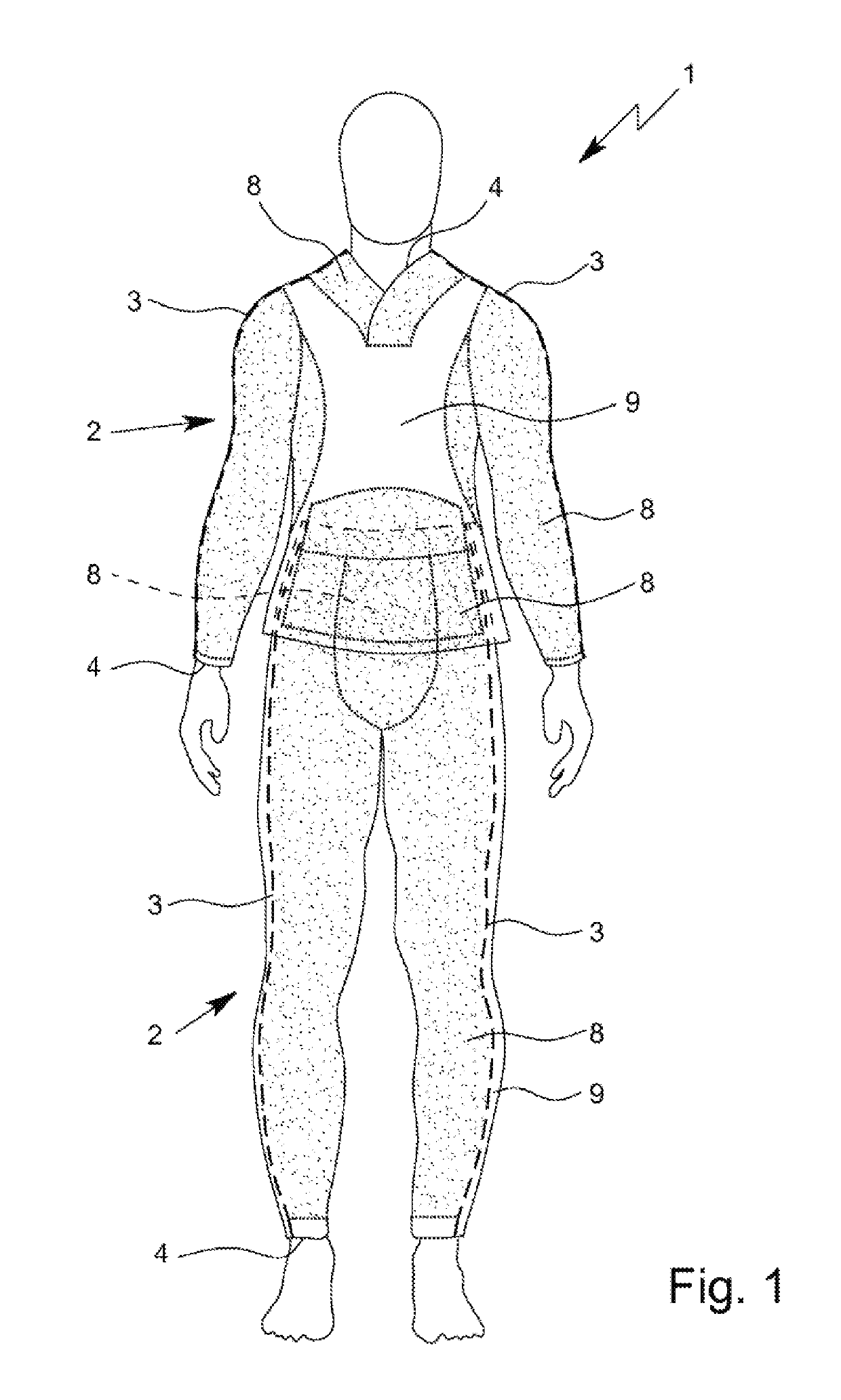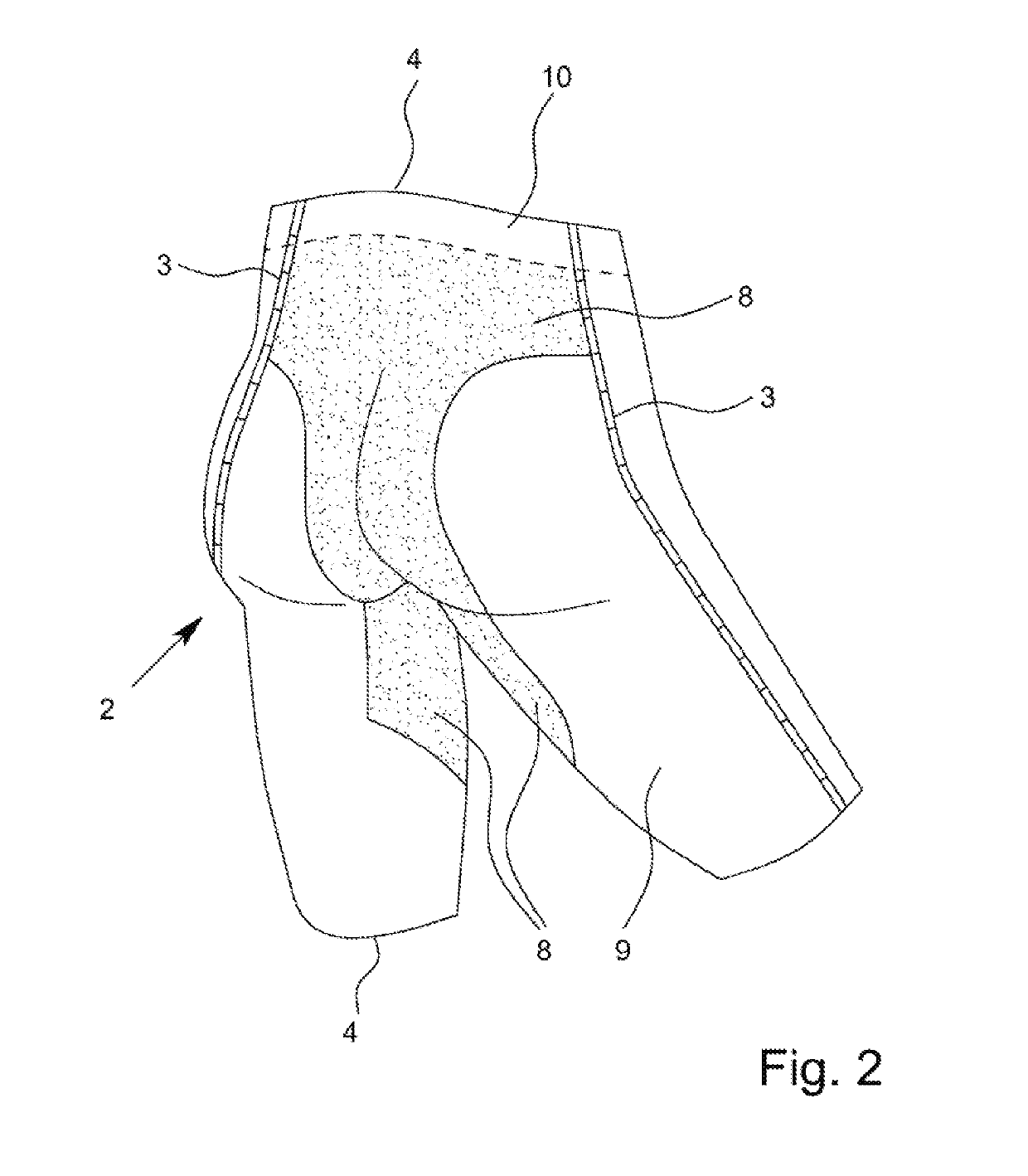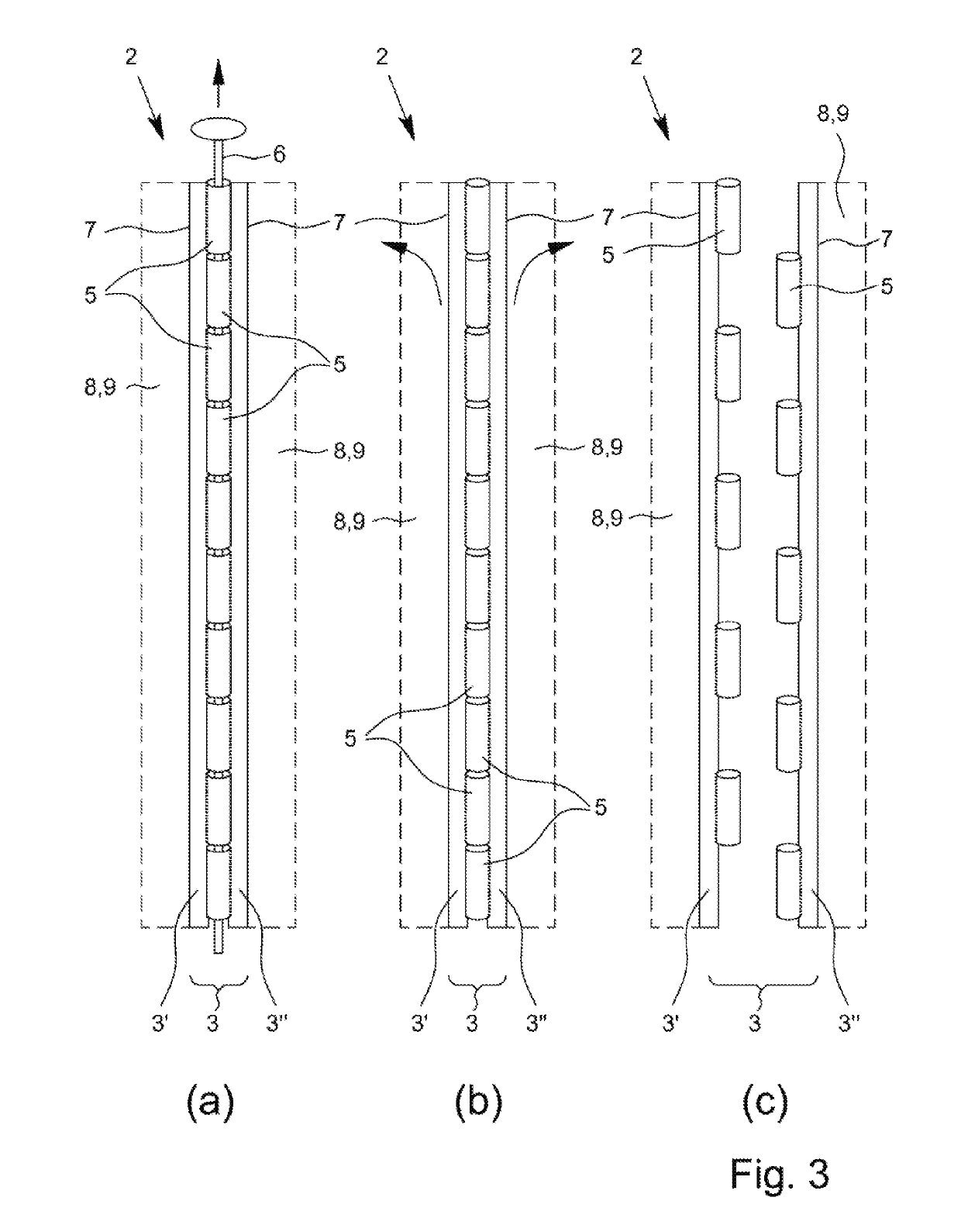Persons deployed in the defense sector as well as in the sector of terrorism countermeasures, such as soldiers of military units, border control agents, police officers, security personnel, or the like, in the context of the deployment thereof, such as military combat missions or security missions, anti-terrorism missions, or missions for countering in particular military or terrorism actions, are often confronted with an acute or at least latent risk of direct physical action such as is caused, for example, by the action or explosion, respectively, of blasting devices, besides the use of firearms or stabbing weapons.
In this context, blasting devices which release splinters and which can lead to often life-threatening as well as multiple injuries in persons exposed to an explosion of this type are to be mentioned in particular.
Blasting devices of this type have progressed to being a subtle tool with a high injury or risk potential, respectively, when confronting or waging war against, respectively, the afore-mentioned groups of persons, in particular soldiers.
Non-conventional blasting devices are also associated with a high risk potential in that said non-conventional blasting devices can often be produced without any major technical complexity and in this context can also vary in terms of the material, size and appearance, this rendering said non-conventional blasting devices difficult to pinpoint and identify.
Moreover, non-conventional blasting devices often develop a high destructive force, associated with a correspondingly high risk of injury, in particular as a result of the explosive release of primary and secondary splinters or fragments, respectively, and of the creation of a large shockwave, on the one hand, and of fire and heat, on the other hand.
By virtue of the functional mode of non-conventional blasting devices, having the explosive release of splinters or splinter projectiles, respectively, severe injuries over a large area can often occur in the case of persons exposed to explosions of this type, said injuries resulting in particular due to the penetration of primary and secondary splinters or fragments, respectively, into the body, or else due to the (explosion) shockwave, or the influence of fire and heat, respectively.
Splinters or fragments, respectively, of this type can also lead to correspondingly severe injuries, the more so since said splinters or fragments, respectively, generally can have a sharp-edged shape, such that a penetration of the body with the associated injuries can be caused in the case of a corresponding acceleration.
The penetration of an affected person by secondary splinters or fragments, respectively, is moreover generally associated with an
increased risk of infection, the more so since contaminated secondary splinters in the case of an increased splinter density hit the body in high numbers and at a minor mutual spacing (that is to say with a high splinter density), and often ingress the
skin or the tissue, respectively, to great depth.
Primary splinters can also lead to comparable consequences.
Moreover, in some instances severe injuries to the
artery and
vein system, in particular close to the surface, and to the
skin surface also result generally, in particular on account of the penetration of splinters and the effect of heat in the aforementioned body portions.
In this context, injuries by penetration to such
body regions or areas in which the
blood vessel system (
aorta and
vein system) runs relatively closely below the
skin surface, since a particularly high risk of injury to blood-conducting vessels with a correspondingly high loss of blood occurs in these regions and is associated with the risk of bleeding to death, or of hypertension, are generally also problematic.
The region of the
abdominal cavity with the
stomach / intestinal tract as well as the urinal tract is also extremely problematic in terms of a penetration by splinters, since the organs or organ portions in question are at least partially filled with liquids which can comprise infectious
bacteria such that any injury in these regions with a corresponding release of liquid can lead to severe systemic infections.
Moreover, the injuries caused often require severe surgical intervention, including the
amputation of extremities or of the genitals, respectively.
In this instance, a sustained loss of mobility, or a sustained restriction in terms of the
quality of life of the affected persons often arises.
However, systems of this type are not yet known in the prior art.
Rather, the prior art significantly focuses on the provision of such devices having a ballistic protection function, which are not especially focused on splinter protection, on the one hand, and which are capable of protecting only individual
body regions or portions, respectively, per se in a certain manner on the other hand, as is the case, for example, in protection vests or helmets, wherein devices of this type often have component parts or components, respectively, which can lead to the configuration of the secondary splinters or fragments, respectively, in question, and moreover often do not offer an optimal wear comfort, the latter overall reducing the wear acceptance and thus the wear duration.
Moreover, the protection devices known in the prior art often have the problem that said protection devices, for example in the case of injury, or for the purpose of
medical emergency treatment, respectively, cannot be rapidly removed from the body of a wearer, or be removed only with great complexity, respectively, so that the undressing or removal of clothing, respectively, is often time-intensive and is associated with further unnecessary stress for the wearer.
However, in the case of the protection systems known in the prior art, by virtue of the respective material properties, there is the problem that said protection systems in particular also have a
high resistance to
cutting, which renders the emergency-related
cutting of the clothing difficult or impossible, respectively, such that the affected wearer of the
protection system has to be undressed in a complex manner, which in turn can be associated with a worsening of underlying injuries.
The protection systems known in the prior art generally thus do not permit any rapid removal while avoiding excessive body movements of the affected wearer, such that a simple release of the clothing, or releasing an
injured person from the clothing, respectively, is often not possible.
This is in particular also disadvantageous from the point of view that the victim, in particular also in the case of an IED explosion, has to be provided with on-the-scene
medical care as fast as possible, wherein the
protection system, or the protection clothing, respectively, to this end generally should be completely and immediately removed from the body of the wearer.
Moreover, the materials used in the prior art for providing the protection devices do not always have a desired durability in terms of the ballistic stability.
Moreover, the haptic properties are not always optimal.
Moreover, the wear comfort provided in this context is in some instances likewise not optimal.
 Login to View More
Login to View More  Login to View More
Login to View More 


